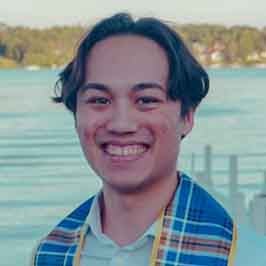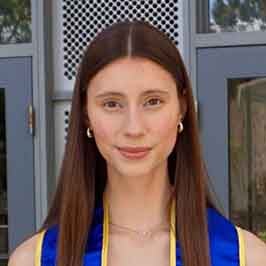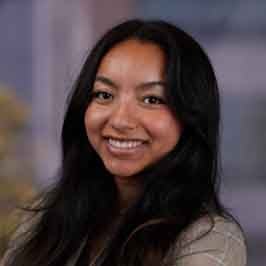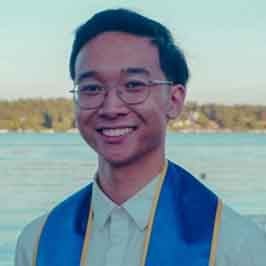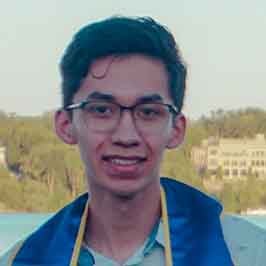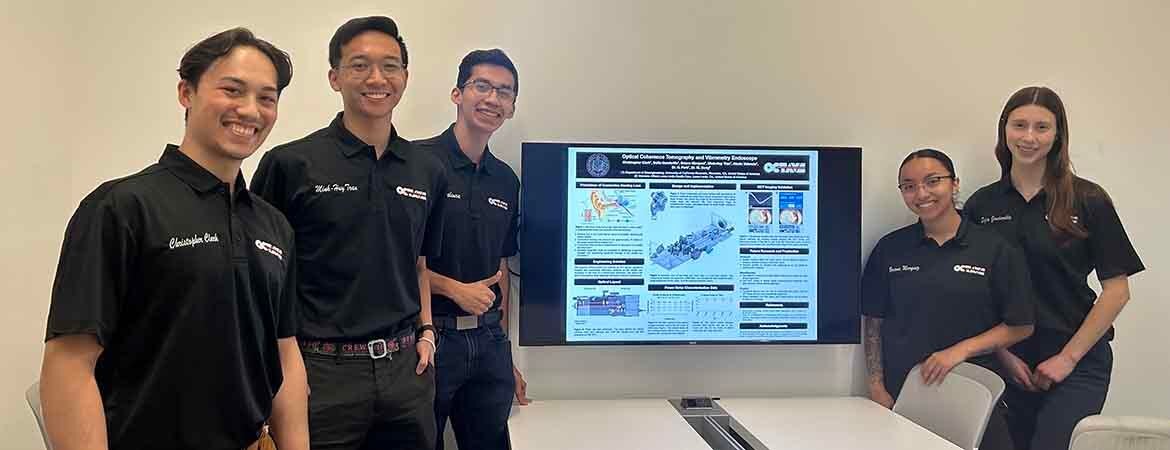
In this second part of a five-part series, we share some of the experiences and reflections of five Department of Bioengineering students who redesigned an innovative new hearing-loss diagnostic tool. For some, the experience of creating the Optical Coherence Tomography and Vibrometry Endoscope (OCTAVE) was all about friendship and family. For others, it was a stepping stone to bigger things. But for all team members, it was a transformative and wholly unique experience in their engineering education and growth.
Five undergraduate bioengineers at the Marlan and Rosemary Bourns College of Engineering (BCOE) pooled strengths, leveraged differences, and found chemistry on a project that could eventually bring better hearing-loss treatment to millions of people worldwide.
Over three academic quarters, the students formed a tight-knit group and shared a deep sense of common purpose on their way to redesigning the imaging portion of an Optical Coherence Tomography and Vibrometry Endoscope (OCTAVE).
The endoscope, which the students’ redesign took from clunky to clinic-ready, measures conductive hearing loss and images the middle ear with more precision than current alternatives such as computer tomography (CT) or magnetic resonance imaging (MRI) scans.
The group’s work — assisted by Hyle Park, a Department of Bioengineering associate professor; Rob McKee, an assistant professor of teaching in that department; and Wei Dong, professor and research scientist at the Loma Linda University Hospital Veterans Affairs clinic — delivered a breakthrough innovation. It also resulted in a National Institutes of Health Design by Biomedical Undergraduate Teams (DEBUT) award for excellence in undergraduate biomedical design.
For a peek at the students behind this exceptional senior design project, here is a snapshot.
The OCTAVE project experience in one word: Adventure
Why this project: I had joined Dr. Park’s lab the year prior.
Career goals: Become an MD/PhD and launch a start-up medical device company based on the OCTAVE project.
Hometown: Grew up in San Jose; moved to Fullerton in high school
Hobbies: Music production, rock climbing, and now 3D printing, thanks to teammate Alexis Valencia’s influence. Before the project, that third hobby was video games.
Notable fact: “An interesting fact is I participated in an overseas medical mission in a rural town, and during a simple hernia repair surgery, they let me ventilate the patient since they had no machines to do it and they were low on staff. However, the power went out mid-surgery. The surgeons and nurses had to leave to get a backup generator and head lamps, but I was stuck there in that dark room keeping the patient alive. What would have been a 30-minute surgery ended up taking one-and-a-half hours, and I bagged the patient the whole way through.”
The OCTAVE experience in one word: Family
Why this project: This project offered me the opportunity to apply my previous introduction to optics at the intersection of engineering and medicine.
Career goals: To become a practicing physician with a focus on holistic, preventative medicine, and women's health
Hometown: Chula Vista
Hobbies: Running, practicing yoga, reading, and exploring local coffee shops!
Notable fact: “I am the first in my Mexican-Puerto Rican family to become an engineer!”
The OCTAVE experience in one word: Friendship
Why this project: "Because of its unlimited potential for computer-aided design and various manufacturing modalities, I feel most passionate about innovating technology for medical application. OCTAVE has already improved health care and this opportunity allowed me to use it to create a device with the possibility to improve people’s lives."
Career goals: Become a clinical educator, providing education about our therapies at AtriCure, where I work, to new physicians and medical staff
Hometown: Riverside
Hobbies: Rock climbing, crocheting, and line dancing
Notable fact: “I am currently in an early career development program with AtriCure, a cardiac medical device company, where I hope to continue to learn and see cases where our devices are improving the lives of countless people across the globe.”
The OCTAVE experience in one word: Unbelievable
Why this project: "The project fit my interests in using optics for biomedical applications and Chris Clark was a potential teammate. This project was important to me because I would have the opportunity to work on a medical device prototype that has the potential to revolutionize hearing-loss diagnostics. I also believed that the project was challenging enough to improve my engineering skills."
Career goals: Obtain a PhD, along with business certifications, and then use my expertise to start my own medical device company
Hometown: San Jose
Hobbies: Prototyping for fun (electronics, 3D printing, coding), long-distance running, and collecting engineering textbooks that I will probably not read
Notable fact: “I love to teach, inspire, and enable others. I have been a peer educator (Supplemental Instruction Leader) at the UCR Academic Resource center for three years, and I have enabled many students to succeed in their general chemistry courses and math courses. Through my career, I’ve inspired 11 previous students to be Supplemental Instruction Leaders. I had also created synthefy, a free organic-chemistry teaching program that has reached more than 500 students in the span of two years.”
The OCTAVE experience in one word: Stepping-stone
Why this project: Neural engineering is the path I am taking, but since a neural project was off the table, I sought a project that would require me to design and build stuff.
Career goals: "Keep improving my skills through my master’s degree at Carnegie Mellon University (CMU). I could go for a PhD in neural engineering, where I could continue to develop cutting-edge technology to improve medicine. My current interest is to find a more reliable yet affordable and noninvasive brain-computer interface that could restore or enhance motor control through robotics. Thanks to my introduction to optics from OCTAVE, I was able to enter a biophotonics lab at CMU and have a better grasp of the research I am conducting."
Hometown: “From everywhere. I consider myself a nomad as I was born in Minnesota, moved to Mexico for elementary school, graduated from middle and high school in Texas, and completed my undergraduate journey in California."
Hobbies: Fabrication, including 3D design with Fusion 360, printed circuit board design, and microcontroller programming. Playing instruments like guitar, piano, and marimba. Rock climbing, a passion I discovered thanks to the influence of teammate Chris.
Notable Fact: "I led the development of an augmented reality app featuring a virtual Enigma machine from World War II and a custom Caesar Cipher machine to help students explore encryption and decryption concepts interactively. I designed the 3D models, programmed its mechanism in C#, and collaborated with a Department of Computer Science and Engineering lecturer, Ryan Rusich, who plans to use it in his class. The app is currently in beta testing and is nearing publication for a more immersive learning experience for UCR students."
This story is the second in a five-part series. You can read the other parts below:
The Sound of Success Part 1 - How a team of bioengineering students turned a Senior Design project into an innovative diagnostic tool for hearing loss
The Sound of Success Part 3 - Student engineers overcame multiple design, fabrication, software challenges to refine and bring their project to life
The Sound of Success Part 4 - Faculty and industry support were critical in helping bioengineering students reap the rewards of their redesigned device
The Sound of Success Part 5 - Award-winning team of bioengineering students share the success factors that helped them achieve "nothing short of extraordinary.
Header image: (From L-R) Chris Clark, Min-Huy (Huy) Tran, Alexis Valencia, Briana Marquez, and Sofia Gandarilla presenting at the 2024 Summer of Biomechanics, Bioengineering, and Biotransports Conference. (All photos courtesy of the OCTAVE team)
